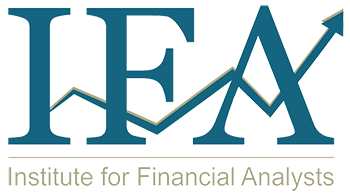Four Essential FRM® Exam Preparation Strategies
Posted by: Eric Smith, CFA, FRM
Updated: August 7, 2018
Basic strategies you should follow while learning the FRM® curriculum include being aware of the big picture and knowing the main concepts. With these broad strategies, you will be able to apply more specific strategies related to helping you recall information on exam day, such as how to handle formulas and lists.
Strategy #1: The Big Picture
Being aware of the big picture means you should know at least a little about every concept. For example, even if you don’t know the formula for effective duration, at least know that effective duration is a measure of interest rate risk. By remembering basic information on exam day, you will be able to narrow your answer choices. You probably won’t answer many questions correctly with only a basic grasp of the concepts, but you can improve your odds on a multiple-choice question from 25% to 33% by eliminating one wrong answer choice. With this technique, you will also be able to better distinguish between relevant and irrelevant information in a question. Continuing with the duration theme, you would know that bond rating information provided in a duration question is not relevant, because bond ratings reflect credit risk, not interest rate risk.
Strategy #2: Know the Main Concepts
It is important to identify those concepts that will most likely be covered on the exam. In any given year, some concepts might be omitted, but if you can answer most of the questions concerning these main/core concepts, you will dramatically increase your chance of passing. Generally, the idea is to be correct on most of the questions dealing with the important concepts, and then rely on your “big picture” knowledge to get points on the remaining material.
Strategy #3: Formulas
In some cases, you will be given a question where the answer can be obtained by using a formula and a fairly lengthy calculation. However, you may also be able to identify the correct answer without a calculation, if you truly understand the concept or relationship being tested. With any formula you encounter in the assigned readings, you should try to gain a clear understanding of what it is telling you (when it is appropriate to use it) and the relationship among the various input variables.
Think of a formula as just a shorthand way of expressing a relation or concept you need to understand. For example, the population variance is the average squared deviation from the mean. Approaching formulas in this way will reduce your chances of missing a problem if your memory fails you under the stress of exam day.
Strategy #4: “Characteristic” Lists
A common source of specific questions is identifying the characteristics of various securities, models, and valuation methods. A common question format would be “Which of the following most accurately describes…?” Here, a big-picture approach can help you weed out wrong answers. Also, some candidates use mnemonics to help them remember lists of characteristics or lists of pros and cons.
In addition to these four strategies, be aware of your problem areas regarding certain topics. For example, if you have always struggled with the quantitative methods, look for ways to improve your grasp of the quantitative material by spending more time with it or attending an instructor-led training session. Do not expect that you can ignore an entire topic area and make up for the lost points by excelling in another area. Similarly, do not skip an area just because you think you already know it. You need to be reasonably comfortable with all assigned material in the FRM curriculum in order to pass the FRM Exam.
